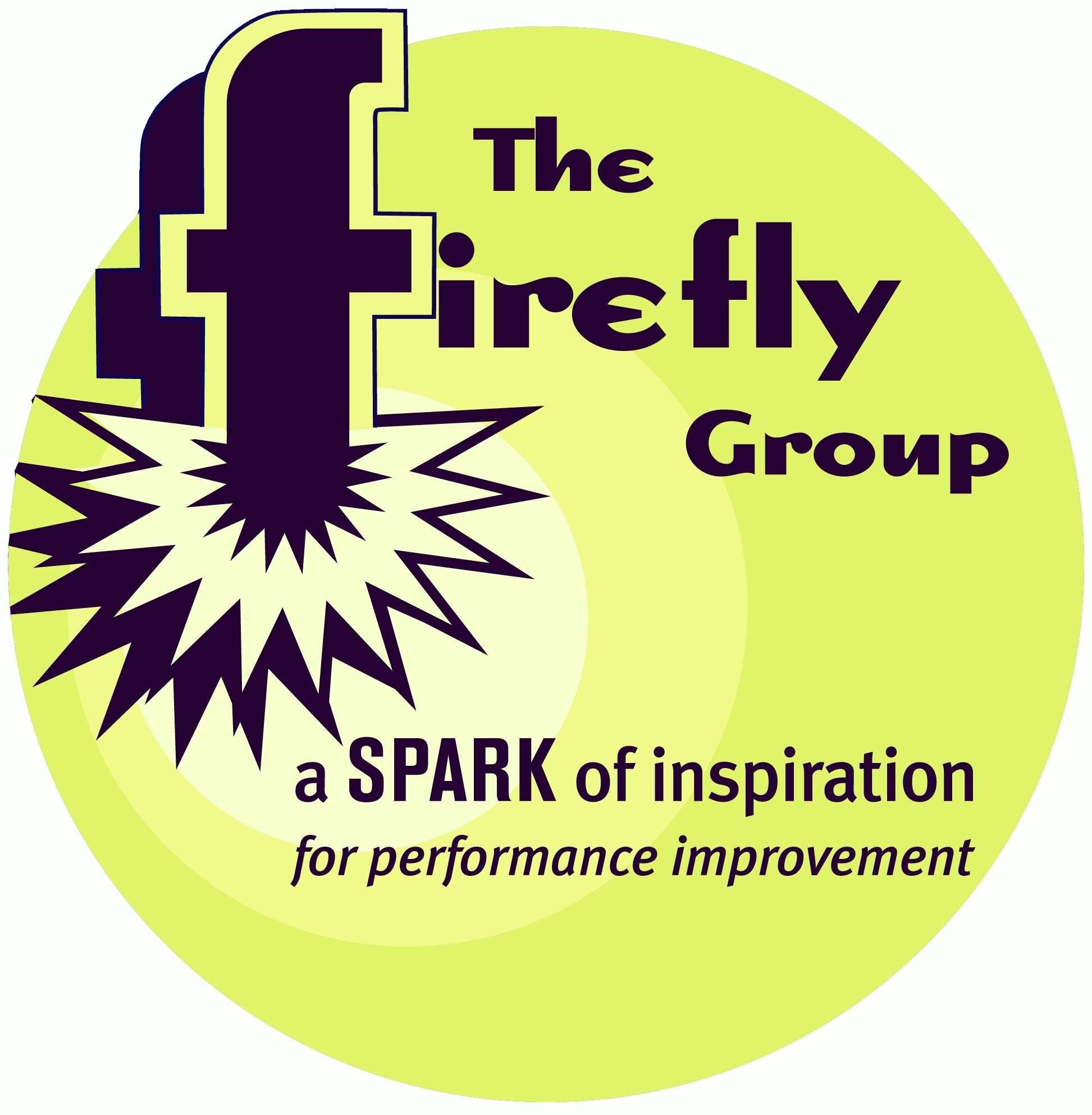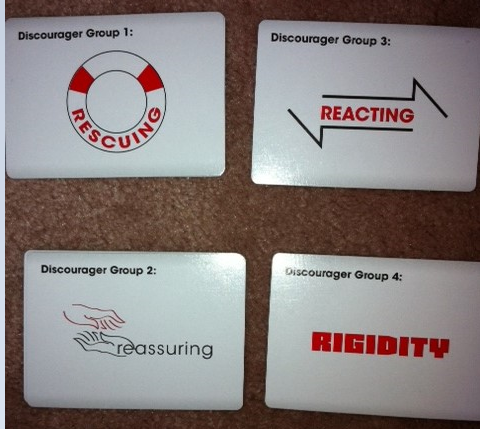

What We Do
The Firefly Group helps people connect their everyday tasks with a bigger, wider sense of purpose and meaning. After working with Firefly, people are energized to attain the mission of their organization and they have a specific action plan to help them achieve their goals.
We do this through leadership development, performance improvement training, strategic planning, and clarification of organizational mission and vision. Our methods are engaging, thought-filled, and results-oriented.
 If
this sounds like a good direction for your organization, let's talk about
how we might collaborate! Please give me a call (802.257.7247) or send an
. - Brian
If
this sounds like a good direction for your organization, let's talk about
how we might collaborate! Please give me a call (802.257.7247) or send an
. - Brian
 Your ETR (Estimated Time to Read): 10 minutes Your ETII (Estimated Time to Implement Ideas): 5 weeks |
From the acclaimed North American Simulation and Gaming Association, comes the much-anticipated The NASAGA Training Activity Book. This first-of-its-kind book offers a dynamic collection of ready-to-use games, simulations, and activities. With contributions from expert trainers, educators, and simulation and game designers, this highly accessible resource presents a variety of activities that address the most common issues that trainers are asked to tackle including:
Communication, Conflict management, Creativity, Customer service/sales/marketing, Decision making/problem solving, Multicultural issues, Organization development, Self-awareness/personal growth, Team building, Training of trainers
Available from Pfeiffer.
March 2013
|
Say
It Quick |
Discoveries bits of serendipity to inspire and motivate |
Ideas fuel for your own continuous learning |
Activities tips and tricks you can try today |
| The Passing Lane | Resiliency Results | Take Aim at Adversity |
What's your initial response to a setback? Discover ways to expand your ability to spring back beginning with this story in just 99 words.
The Passing Lane
Ahead of me climbing the steep mountain highway, three cars and a very slow truck jockey for dominance. The drivers all know this is the only passing lane for several miles. I can just imagine the tension in those cars as everyone tries to get around the lumbering truck before the passing lane ends. They are bumper to bumper at 60 mph!Two cars pass the truck. Not me. But at the top of the hill, the truck makes a left turn onto another highway.
Some problems take care of themselves. Some problems we make ourselves.
 Resiliency
Results
Resiliency
Results
By Barbara Yoli Davis
All of us will face setbacks, disappointment, and tragedy. This is a certainty that we agreed to when we signed up for the human race. But even though we will each experience our own troubles it is how we respond to those difficulties that determines how well we "run" the race.
The ability to spring back from adversity is determined by our level of resilience. You can get a feel for the resiliency of your team or yourself by using Resiliency Results, a deck of cards produced by Barbara Yoli Davis of Change Results Consulting.
The deck is simple to use. There are two types of cards, resiliency encouragers and resiliency discouragers. Read through the encourager cards and separate the qualities of resiliency that you are skilled at using from those you need to work on. Each encourager card fits into one of six categories:
By grouping the
cards into these categories, you can look for patterns between the encouragers
you are skilled at using and those that need work. (For example, when I sorted
the cards, I did not have any cards in the category of expecting and encouraging
resiliency in others.) 
To complete your assessment, sort the cards that discourage resiliency in a similar manner. They will fall into four categories:
Whether you discover encouragers that need work or discouragers you'd like to do less, the cards provide suggestions and reading recommendations for improvement.
The Resiliency Results card deck is a quick way to assess individuals and teams in their ability to flex during times of uncertainty. The suggested actions for improvement provide a starting place for action planning which makes this deck of 56 cards a helpful tool for coaches, mentors, and team leaders.
Learn more about Resiliency Results, Change Results Consulting, and Barbara Yoli Davis, Principal at http://www.resiliencyresults.com/contact.html.
Teaching Resiliency
The 99-Word Story illustrates several concepts of resilience that the Resiliency
Results cards highlight. If you are in a hurry, being stuck behind a slow
truck on a narrow hilly road sure feels like a setback. How will you "bounce
back?" Surging ahead to compete with other drivers is dangerous and may not
produce the results you want. But by "facing reality," you could stay safe
while preparing yourself for the next opportunity.
We can learn the qualities of resiliency ourselves and, as suggested in one category of cards in the deck, we can expect and encourage them in others. One way to do this is to help people develop their assets.
This concept is very familiar among educators and youth workers who help young people develop both internal assets (Commitment to Learning, Positive Values, Social Competencies, Positive Identity) and external assets (Support, Empowerment, Boundaries & Expectations, Constructive Use of Time). The Search Institute http://www.search-institute.org/ has conducted research and developed training materials for use with both children and young adults. Their findings show that those children with more than 31 assets out of a list of 40 are more resilient.
Researchers Emmy Werner and Ruth Smith followed 700 children born in Kauai, Hawaii. One third of them were considered "high risk" due to multiple risk factors at birth. Of these "high risk" children 70 seemed "invulnerable" to the risk. They developed no problems. These children seemed to have been born with outgoing social dispositions and were able to recruit several sources of support for themselves.
The other two thirds of the "high risk" group did develop problems, but the majority of them were doing well by their mid-30s. In other words, five sixths of the original "high risk" group had "bounced back."
How did this process of "bouncing back" happen?
Another angle on resilience comes from psychologist Barbara Fredrickson who has studied the adaptive role of emotions. For her, negative emotions like anger and fear, which trigger fight or flight responses, are clearly adaptive. But she was less clear about the adaptive function of emotions such as joy, serenity, and gratitude.
Her research has led to the Broaden-and-Build Theory of Positive Emotions. This theory posits that positive emotions expand our options for thinking and behavior. People who experience the effects of positive emotions broaden the scope of their awareness, see more opportunities, and accumulate a wider repertoire of behaviors. The adaptive nature of this thinking builds with practice over time so these people experience greater resilience long-term.
As adults, we expect to have many of the Search Institutes' assets in place. Yet, when you notice people on your team who are not very resilient, it is worth asking what they need to become more resilient. Are there similarities for adults among the internal and external assets used by the Search Institute? Can you modify your coaching techniques to parallel the supportive adults in the Hawaiian study? Are there opportunities to capitalize upon positive emotions in the workplace so people can broaden and build their behavioral repertoire?
If you find interesting answers to these questions from your workplace, please !
Take Aim at
Adversity
Whether you are laboring uphill behind a slow moving vehicle or trying to
hold your place in the human race, honing your resilience and increasing your
capacity for novel behaviors is essential. To help you and your team get off
the starting block, try this activity designed to raise awareness and begin
a conversation about resilience.
Time:
45 - 60 minutesParticipants:
Minimum three up to any number; Intact teams work bestMaterials:
Paper cut in fourths (enough pieces so each person has 4 - 12)
Pens or pencils (same color ink for everyone)
Large sign that reads "ADVERSITY" on one wallProcedure:
Distribute several small papers and a pen to each person. Ask people to think about a time they had to deal with a difficult situation, a setback, a loss, a tragedy, or any other adversity.Explain that you are not going to ask anyone to share specifics of their situation. Neither are you attempting to conduct group therapy! Instead, ask people to think about how they got through that difficult situation. What personal qualities or attributes did they rely upon (e.g. perseverance, humor, knowing who I am)? Who provided support (e.g. parent, school counselor, business mentor)? What resources were helpful (e.g. mental health center, internet-based support group)? What helped them stay strong (spiritual practice, yoga, a healthy diet)?
Invite people to write their ideas on the slips of paper; one idea per paper. They can write as many as they wish.
After a suitable time, ask people to take each of their papers and wad it into a small ball so everyone has a pile of "ammunition." On your signal, have everyone throw their balls of paper at the "ADVERSITY" target.
When the chaos and laughter subsides, divide everyone into groups of three to five and give each group a pile of paper wads. Ask the groups to read the papers they have and organize them into clusters that are similar. They can decide and define these clusters of similarity however they wish. Each group should be prepared to share their analysis of this data and what it says about effective ways to stay resilient.
Give each group a chance to share their conclusions then lead a discussion with these questions:
- Which personal characteristics were most common in helping people to overcome adversity?
- What types of people provided the most support during tough times?
- What resources did most people rely upon to stay strong? " What ways of staying strong were surprising to you?
- What gives you the most hope that our team has what it needs to be resilient?
- What are some ways we can use the strengths of our team to be more resilient?
- What are some strategies of resiliency used by individuals that could be adapted for use by our team?
- What adversity do we see on the near horizon that we can use to apply what we've learned about resiliency?
After this activity, you and your group can begin planning your next step to learn more about resiliency! And when you do, please where you are headed!
|
Whether you need a keynote speaker, or help with strategic planning, performance improvement, or training facilitators and trainers in your organization, I look forward to your call (802.257.7247) or . -- Brian |
Read previous
issues. Click Library!
To add or delete your name to our mailing list, email
with a short note in the subject line.
I want this newsletter to be practical, succinct, and thoughtful. If you have suggestions about how I can meet these criteria, please let me know! Send me an with your thoughts and ideas.
Home
| Services
| Products
| Mission
| Ideas |
The Group
| The Buzz
(c)
2013 The Firefly Group